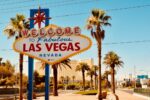- Daylight Saving Time and Its Sweet Ties to Halloween - December 1, 2023
- Puerto Rico’s Ponce Massacre - November 30, 2023
- The Origins of the Doughnut - November 27, 2023
In the heart of Puerto Rico’s tumultuous history, a tragic event stands as a stark reminder of the struggle for freedom and justice. The Ponce Massacre of 1937 is a harrowing chapter, etched in bloodshed and injustice, that continues to resonate with the island’s inhabitants. In this in-depth exploration, we embark on a journey to unravel the tragic events of that fateful Palm Sunday, shedding light on the origins, motivations, and far-reaching consequences of this horrific incident.
Our journey begins in March 1937, just a few days before Palm Sunday, in the city of Ponce, Puerto Rico. It was during this time that permits were acquired by Puerto Rican nationalists to organize a procession and rally. The procession aimed to commemorate the abolition of slavery in 1873, while the rally served as a protest against the detention of Dr. Pedro Albizu Campos, a prominent leader of the nationalist movement. The crucial permits for these events were approved by José Tormos Diego, the mayor of Ponce at that time.
To understand the context of the Ponce Massacre, we must delve into the backdrop of Puerto Rican nationalism and the pivotal role played by Dr. Pedro Albizu Campos. In the years leading up to the massacre, Campos and other nationalist leaders had engaged in violent confrontations with the police. Dr. Campos himself was behind bars, awaiting the appeal of his sedition conviction. The nationalist movement, rooted in the desire for Puerto Rican independence, had gained significant momentum and was challenging the status quo.
The turning point in Puerto Rico’s history came in 1898 when it fell under U.S. authority as a result of the Treaty of Paris. This transformation had far-reaching consequences, as the majority of Puerto Rico’s population became American citizens. The U.S. government assumed control of the island’s affairs, with the executive branch, appointed by the U.S. president, overseeing Puerto Rican matters. This state of affairs persisted from the enactment of the Foraker Act in 1900 until the Olmstead Amendment of 1909.
In 1934, President Franklin D. Roosevelt appointed General Blanton Winship as the governor of Puerto Rico, marking a significant shift in the island’s trajectory. Winship was tasked with suppressing the burgeoning nationalist movement, and his close ties to the U.S. military made him a fitting choice for the role. Under his leadership, the U.S. government decided to militarize the Puerto Rican government in response to the growing calls for independence.
Governor Winship’s tenure was characterized by a rising wave of Puerto Rican nationalism and growing demands for independence. Concerned about the planned Ponce rally, Governor Winship took decisive action. He established and directly controlled the Insular Police, the state’s police force, instructing them to collaborate with the mayor of Ponce to prevent the event from taking place. The organizers of the rally were not informed when their permits were revoked, setting the stage for a tragic confrontation.
The Fateful Day
On that somber Palm Sunday, as the strains of Puerto Rico’s national anthem, La Borinqueña, filled the air, demonstrators began their march. In a matter of fifteen minutes, chaos erupted as the police opened fire from four different angles. The result was devastating – seventeen men, one woman, and a seven-year-old girl lost their lives, while more than two hundred thirty-five individuals were wounded. Over one hundred fifty armed protestors were apprehended.
In the immediate aftermath of the Ponce Massacre, conflicting accounts emerged, further fueling the controversy surrounding the tragedy. Some claimed that the demonstrators had initiated the violence, while others vehemently disputed these assertions. The Washington Post, for instance, reported that “Nationalists opened fire on police officers sent to disperse a prohibited mass protest.” This controversy deepened the divisions and outrage within Puerto Rico.
The Birth of Outrage
The Ponce Massacre swiftly gained notoriety, and outraged Puerto Ricans passionately proclaimed it as “THE PONCE MASSACRE!” To them, true freedom could only be achieved through the sacred sacrifice of innocent lives. The body count served as a stark testament to the severity of the tragedy. Blame was squarely placed on the shoulders of Governor Winship and his associates.
In the wake of the Ponce Massacre, community leaders in Puerto Rico were determined to seek justice and answers. They established the Commission of Inquiry into the Causes, a body tasked with uncovering the truth behind the tragedy. Notably, Arthur Garfield Hays, co-founder of the American Civil Liberties Union (ACLU), served as a member of this commission.
Examining the Evidence
The Commission of Inquiry embarked on a meticulous examination of the evidence surrounding the Ponce Massacre. One piece of evidence that raised questions was a snapshot depicting unarmed demonstrators surrounded by heavily armed police officers. The formation of the police officers in the image did not align with the idea of dispersal, leaving observers puzzled.
After meticulous scrutiny, the Commission of Inquiry delivered a damning verdict. It held Governor Blanton Winship and the Insular Police responsible for the tragedy that unfolded on that fateful Palm Sunday. The report marked a significant moment in the pursuit of justice for the victims of the Ponce Massacre.
As we reflect on this dark chapter of Puerto Rican history, the Ponce Massacre serves as a solemn reminder of the enduring quest for justice and freedom. The tragic events of that Palm Sunday continue to be a poignant part of Puerto Rico’s history, a testament to the resilience of a people in their pursuit of self-determination. In remembrance, we honor the lives lost and the determination of those who sought to uncover the truth, ensuring that such events are never forgotten.










